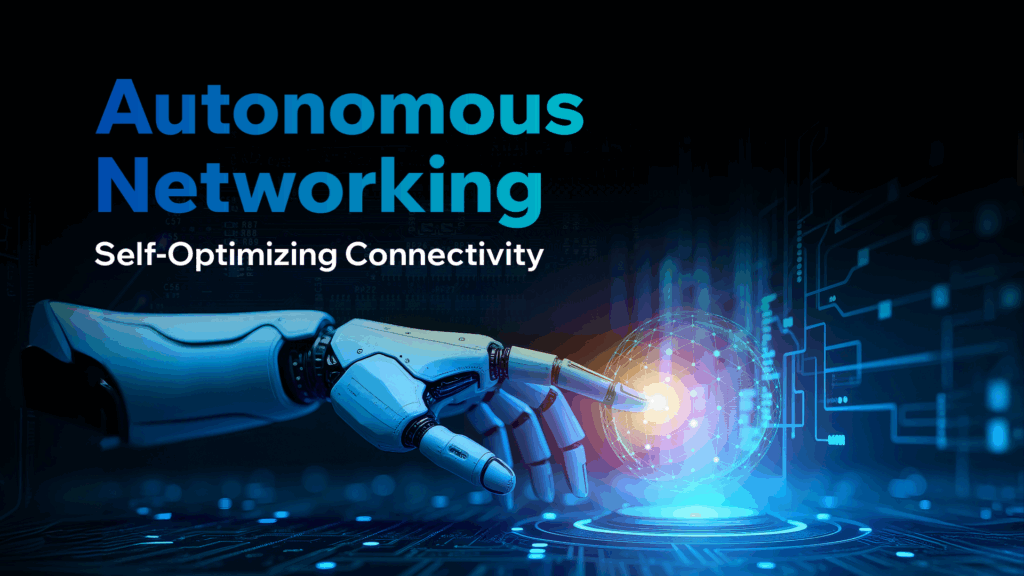
As digital transformation accelerates, traditional network infrastructures are increasingly struggling to meet the demands of dynamic, cloud-native environments. This has led to the emergence of autonomous networking — an AI-driven approach to network management that enables self-optimizing connectivity, ensuring high performance, reliability, and scalability.
What is Autonomous Networking?
Autonomous networking is a next-generation approach that integrates AI, machine learning, and real-time analytics into network infrastructure. Unlike manual or static configuration models, autonomous networks are self-aware, self-configuring, self-healing, and self-optimizing.
Key capabilities include:
- Dynamic bandwidth allocation
- Predictive congestion management
- Real-time anomaly detection
- Automated policy enforcement
These networks require minimal human intervention and adapt automatically to changing conditions, traffic patterns, and user demands.
The Concept of Self-Optimizing Connectivity
Self-optimizing connectivity refers to a network’s ability to monitor its own performance in real time and make automatic adjustments to optimize throughput, reduce latency, and minimize downtime.
Examples of self-optimizing behaviors include:
- Rerouting traffic to avoid congested or faulty paths
- Increasing bandwidth in high-demand zones
- Scaling resources based on usage patterns
- Resolving faults before they impact users
This makes autonomous networks ideal for latency-sensitive applications like cloud gaming, video conferencing, IoT, and multi-cloud deployments.
Benefits of Autonomous Networking
- Improved Performance and Uptime
AI-driven decisions ensure high availability and near-zero packet loss. - Operational Efficiency
Reduces the need for manual network configuration, troubleshooting, and maintenance. - Scalability
Enables rapid expansion across edge, core, and cloud with minimal effort. - Security and Compliance
Intelligent threat detection and real-time policy enforcement improve security posture. - Lower Costs
Fewer outages, fewer human errors, and less overhead lead to significant OPEX savings.
Real-World Use Cases
- Cloud Service Providers use autonomous networking to manage high-volume data transfers and interconnectivity between data centers.
- Enterprises adopt self-optimizing WAN for hybrid workforces to ensure application reliability.
- Telecom Operators leverage AI to enhance 5G backhaul and dynamically manage spectrum and bandwidth.
Autonomous Networking & The Future of Digital Infrastructure
As organizations continue to adopt cloud, edge computing, and IoT at scale, autonomous networking will become a fundamental part of modern infrastructure. Future developments may include:
- Intent-based networking
- AI-enhanced routing protocols
- Predictive SLA management
The convergence of autonomous networks with network-as-a-service (NaaS) models will further accelerate adoption and innovation.
